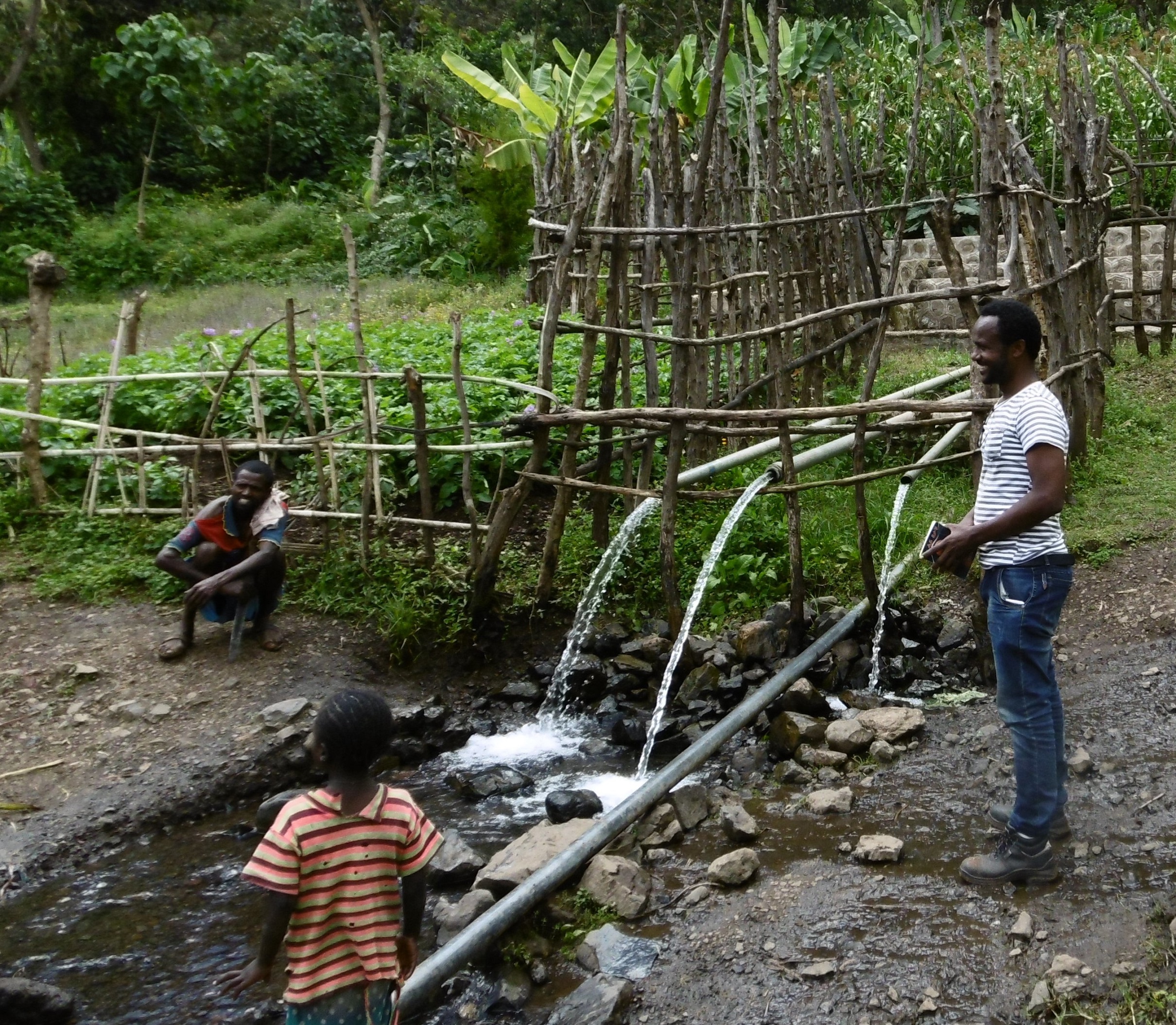Ethiopian Odyssey
Ding! Ding! Dong! Oh no! 4.30am alarm. We quickly arose, donned our clothes and gulped down our breakfast to be on the road by 5.30am. Off to Tsayte village to see the capped spring. We loaded ourselves into the 4-wheel drives and headed off. Never would we have guessed what was to come.
Yes, it had rained the night before but to what affect we were yet to discover. Of course the ground was slippery, but that wasn’t half of it. The vehicles spent the next two and a half hours slipping, sliding, bogging, fording what felt like lakes, through holes, rocks, slithery hills. It was treacherous to say the least and the so called roads seemed mountain tracks. To say there had not been a highlight would not be true. As we passed through a village where Fumi, the Japanese representative for HOPE, had lived for two years, we heard loud joyful cries of ‘Fumi! Fumi! Fumi!’ They had loved him so much that any white face going through their village is called Fumi.
Finally, we reached the point where we disembarked to walk the seven kilometres into Tsayte Village. We passed women carrying far too big loads on their frail backs, men with loaded donkeys and sheep and cattle herds finding new pasture. But what stood out even more was the beauty of the countryside – this was like a patchwork quilt. A beautiful scene of crops of oats, barley, wheat, beans, cabbage, pumpkin, potatoes and more interspersed by the beautiful red colour of the soil. Surrounding each small thatched house was a lush garden of vegetables. Questions began to flood our minds and we began to ask, ‘Why do we need to be involved here? Haven’t they got plenty of water and food?’
The next part of the road the was road that HOPE built, the only access to Tsayte village. How had they managed before? This was essential to enable materials to be delivered to the village for the capping of the spring. As we cast our eyes further along the road we could just make out in the distance a large number of people on the brough of the hill. Venturing closer we discovered a very large group of men digging and manicuring the road with their picks and coming even closer we heard the most awesome sound of singing and the dancing began. What a sight! This was our welcome to Tsayte.
We were to be hosted to lunch by the villagers, but first the trek up the mountain to the spring. What a view! The valley stretched below us from west to east, with houses dotted over the landscape. We were told that six thousand people lived in this area and that this spring and a second smaller one fed continuous pure water to them all. To maintain the purity of the water the villagers had lined the spring with filter materials and then covered it with protective concrete. The galvanised pipes fed two reservoirs at each end of the valley with thirty-three water stations coming off these for people to access easily.
Back in the village, the village women and some men had formed a huge semi-circle eagerly awaiting us to share their stories of change. What a thrill and a privilege for us! The delight on their faces as they told of how there were now no sick children as a result of contaminated water, they had been creating extra income for themselves e.g. small eating houses, and showed us their savings records, they had a community savings box where money was contributed for people who may suddenly have to access health care, etc. They now knew so much more about hygene and the schools were buzzing as teachers could now stay safely in the villages. They now had healthier latrines. When the rainy season comes everything looks lush and green. But this does not last, water becomes scarce and contaminated producing disease and results in huge powerlessness and lack of choice. Some people call this ‘Green Poverty’.
This is why we do what we do!

Barbara Stuckey
Chairperson


